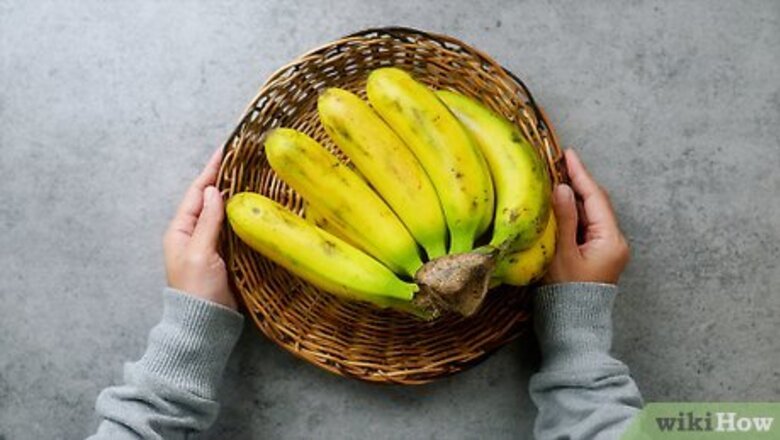
views
- Store bananas at room temperature and away from other fruits to slow the ripening process.
- Wrap the stems in plastic wrap, and hang them from a hook or a bit of string to improve air flow.
- Once your bananas are ripe, pop them in the fridge or freezer to keep them ripe for longer.
- Coat your peeled bananas in lemon or lime juice, vinegar, or vitamin C to create a barrier that helps prevent browning.
Preserving Bananas in the Peel
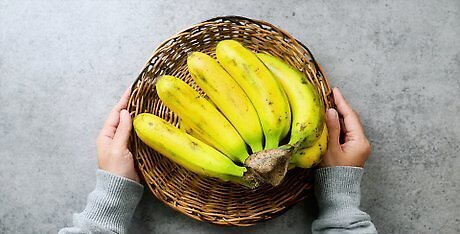
Purchase bananas that are green on the ends and yellow in the middle. This means they are slightly under-ripe, and have been stored in proper conditions while in transit to the supermarket. Make sure the bananas have no brown spots or blemishes. Bruises and punctures leave the banana exposed to air, which speeds up the ripening process. Avoid bananas that are already solid yellow. These have already begun to ripen, and will go brown much sooner than a partially green banana. Also, take that bunch out of the plastic bag ASAP. The plastic traps ethylene gas, accelerating the ripening process.
Wrap the first 2–3 in (5.1–7.6 cm) of the banana stems in plastic. Often, you’ll see bananas at the supermarket with their stems wrapped in cling film. That’s a handy industry trick—wrapping the stems in plastic prevents ethylene from traveling down the banana and speeding the ripening process.

Hang your bananas on a banana hanger. Hanging your bananas from a hanger or a length of string ensures they’ve got plenty of air circulation. This means that the ethylene gas that makes them ripe is moving away, preventing the bananas from browning too quickly. It also prevents bruising and other physical damage.
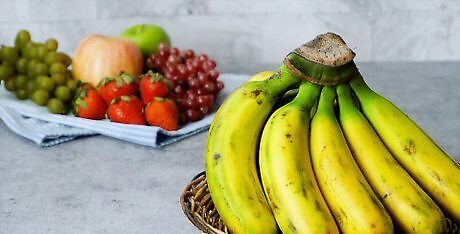
Keep your bananas 2–3 ft (0.61–0.91 m) away from other fruits and vegetables. Other fruits and vegetables, like avocados and apples, give off the same ethylene gas that causes bananas to ripen. And since they ripen at different speeds, it could spell trouble for your yummy yellow bunch. Set your bananas somewhere away from other produce to let them ripen at their own pace.
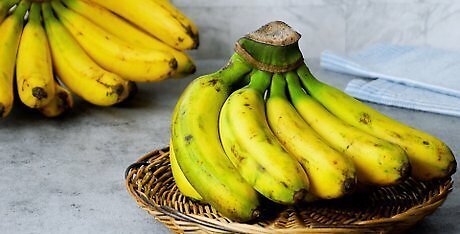
Store bananas at room temperature until they are ripe. Ripening bananas are a bit fickle—too cold and they might not ripen at all. Too hot, though, and they might ripen in a flash. On the counter? Just right. Placing an unripe banana in the fridge inhibits the ripening enzymes, while encouraging other enzymes to work even faster. These other enzymes cause cell damage, blackening the banana’s skin.
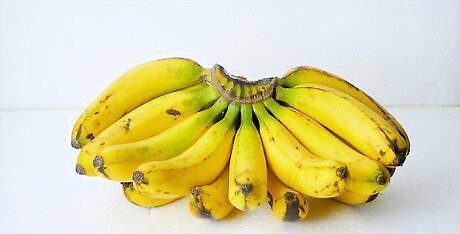
Place bananas in the refrigerator once they are ripe. Now that the ripening process has begun, you can safely delay it with cold temps without worrying about damage. Since they’re already ripe, the chemicals that cause browning aren’t too much trouble. Keep your bananas in the fridge to preserve that perfect yellow hue for 3-4 days. Don’t be alarmed if your banana peel turns completely black. This is due to the pigment of the peel turning black and does not have anything to do with the actual freshness or flavor of the banana.
Preserving Peeled Bananas

Freeze bananas in an airtight plastic container. Freezing temperatures slow down ethylene gas emissions, dramatically slowing the rate at which the banana ripens. To save a banana for 2-3 months, peel it, then place it in an airtight container like a plastic food storage bin or a sandwich bag, then pop it in the freezer. To thaw a frozen banana, set the container on a room-temperature counter for 5-6 hours, or pop it in the microwave on medium power for 1 minute.
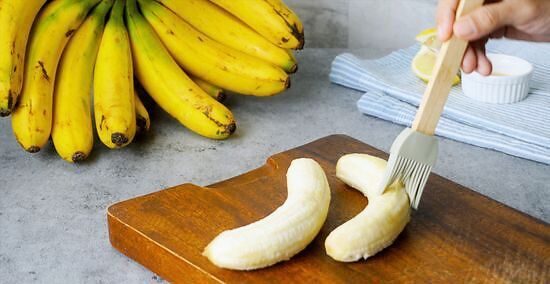
Brush the banana in lime or lemon juice. Use a kitchen brush or a spray bottle to coat the peeled banana in a natural acid, like lemon or lime juice. The acid in citrus fruits acts as a preservative coating, stopping oxidation and keeping the banana yellow longer. Use a sparing amount of lemon juice—more lemon juice doesn’t mean better preservation. For sweeter alternatives, replace lemon juice with pineapple, orange, or apple juice. Pair this method with freezing, as lemon juice alone won’t stop your peeled bananas from going brown, only delay the process for a little while.
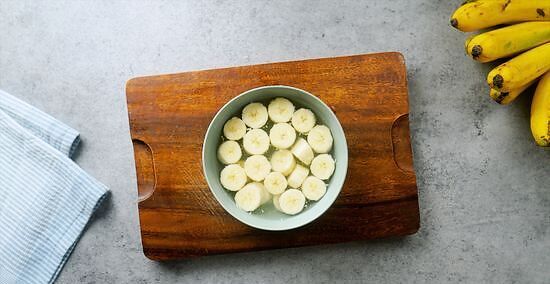
Dip peeled bananas in a vinegar water solution. Just like citrus juice, the acid in vinegar helps slow the ripening process, and is a nice alternative if other fruit juices are distorting the taste too much. Simply combine 1 part vinegar and 4 parts water. Dip the banana, sliced or whole, into the water for about 3 minutes. Submerging the banana for more than 3 minutes may cause it to become too soft and can impart a too-strong vinegary taste. Afterward, store the banana in an airtight container in the freezer.

Soak bananas in a water solution with crushed vitamin C. If you don't have access to other fruits or vinegar, vitamin C can achieve a similar effect when dissolved in water. Crush a single vitamin C tablet with a spoon and sprinkle it into a glass of water. Stir the solution with a spoon and dip your bananas in the water for a few seconds. Effervescent vitamin C tablets work especially well for this. Put one tablet in a glass of water. Once the effervescence stops, skip stirring and dip your bananas in the water immediately for a few seconds.
Using Overripe Bananas
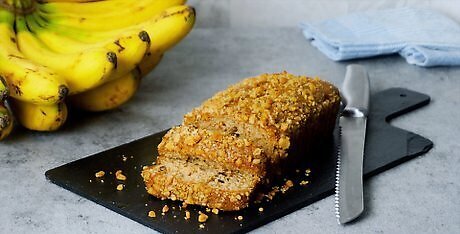
Bake banana bread with brown or overripe bananas. Just because you may not have saved all bananas from ripening doesn't mean you can't use them in tasty treats. Banana bread is sweetest and most flavorful when made with overripe bananas. For bananas considered a "lost cause," banana bread is usually the answer. Combine 3 mashed, overripe bananas with 1 cup (120g) of sugar, 0.5 cups (113g) of softened butter, 1.5 cups (213g) of flour, 2 eggs, 4 US tbsp (59 mL) of milk, and 1 tsp (4.9 mL) of vanilla extract. Stir the mixture until it’s smooth, then bake it in the oven at 350 °F (177 °C) for 1 hour, until an inserted toothpick comes out clean.
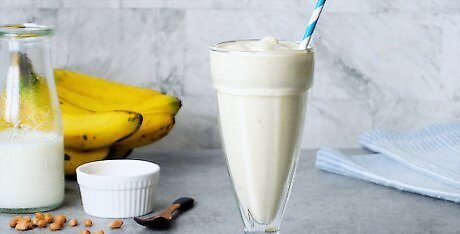
Blend a healthy banana apple smoothie. Throw your overripe bananas into the blender with a few other ingredients to create a tasty banana smoothie. In a blender, combine an overripe banana, half an apple, a dash of cinnamon, 0.5 tsp (2.5 mL) of vanilla extract, 1 c (240 mL) of milk, and a handful of ice cubes. Blend the mixture thoroughly until it's your preferred consistency. Add more milk to make it smoother, and add ice to make it chunkier. For added texture, blend a handful of whole oats into the smoothie. This will give your smoothie a crunchy consistency to offset the richness.

Freeze melted bananas into Bananas Foster popsicles. Bananas have the perfect texture for a creamy frozen treat. First, add 2 overripe bananas, 2 tablespoons (29.6 ml) of brown sugar, 1 tablespoon (14.8 ml) of butter, and ½ teaspoon of cinnamon to a small bowl and microwave it in 30 second intervals until the bananas are soft. Stir and allow the bananas to cool, then add the mixture to a blender along with 0.5 c (120 mL) of plain Greek yogurt, 0.5 c (120 mL) of milk, 1 tsp (4.9 mL) of vanilla extract, and 1 tsp (4.9 mL) of rum extract. Blend everything together. Pour the blended mixture into popsicle molds and place them in the freezer for a few hours until they are completely frozen through. Pop them out of the popsicle mold when you are ready to serve.



















Comments
0 comment